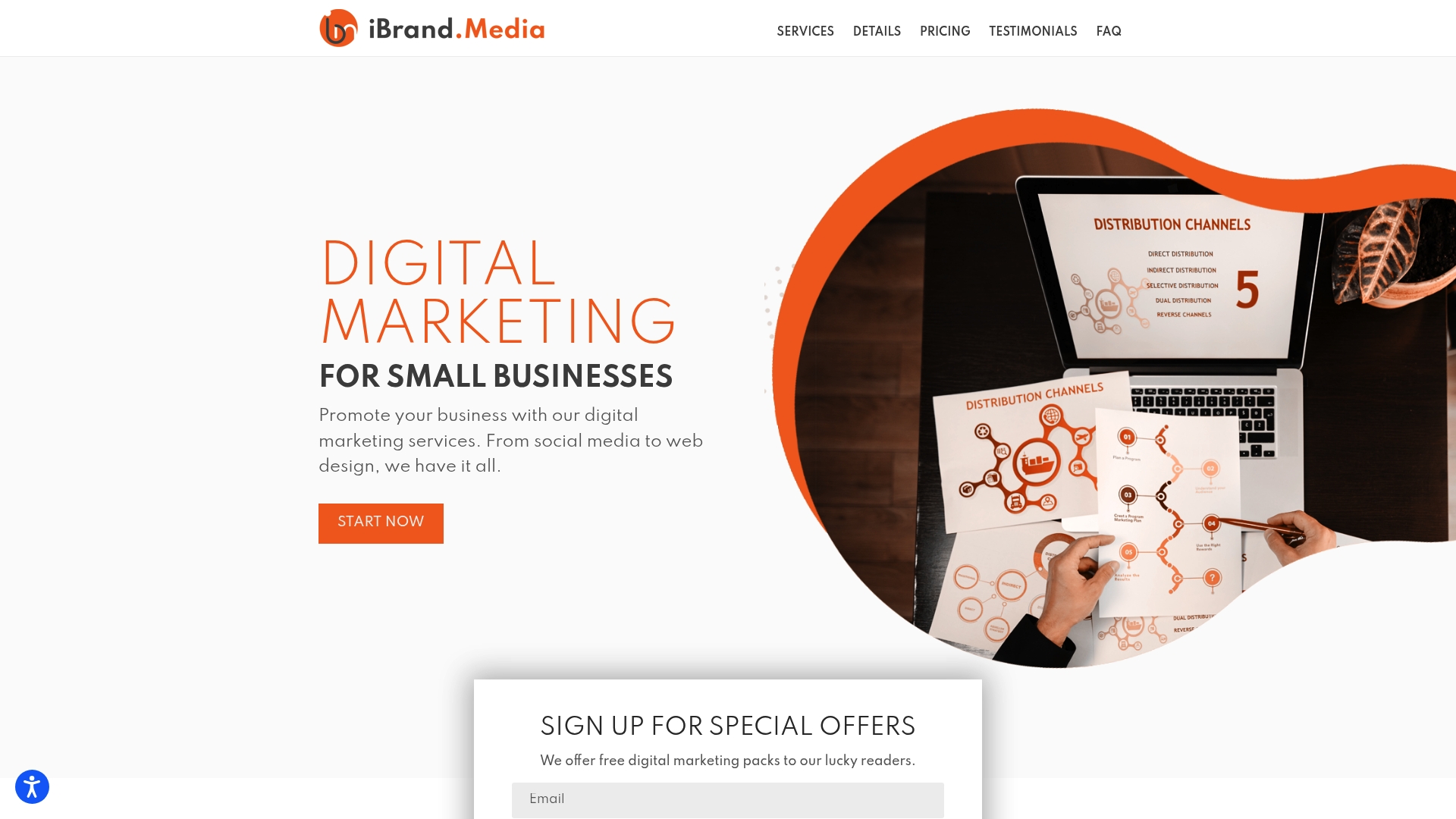Every website promises a good experience but most leave visitors frustrated or confused. Designers often focus only on looks or flashy features. Yet research from the Nielsen Norman Group shows that user experience impacts every step a person takes online, from clicks to final decisions. This flips the script and proves that what truly matters is not just how a website looks but how it makes people feel and behave.
Table of Contents
- What Is User Experience In Web Design?
- Why User Experience Matters For Your Business
- Key Principles Of Effective Web Design For User Experience
- How User Experience Influences User Behavior
- Real-World Applications Of User Experience In Web Design
Quick Summary
| Takeaway | Explanation |
|---|---|
| User experience encompasses all user interactions. | It includes usability, accessibility, visual design, and information architecture in web design. |
| Good UX boosts business performance metrics. | Prioritizing user experience enhances conversion rates and customer retention, directly impacting revenue. |
| Effective design anticipates user needs. | Websites should provide intuitive navigation that guides users towards their goals seamlessly. |
| Emotional connection influences user behavior. | Positive UX fosters trust and emotional bonds that encourage users to engage and return. |
| Implement targeted UX strategies for businesses. | Tailoring UX designs based on industry needs improves functionality and user satisfaction. |
What is User Experience in Web Design?
User experience in web design represents a comprehensive approach to creating digital environments that not only function effectively but also provide meaningful and satisfying interactions for users. At its core, user experience (UX) goes beyond simple website aesthetics or functionality. According to the Nielsen Norman Group, UX encompasses all aspects of an end-user’s interaction with a company’s digital platform.
The Foundational Elements of User Experience
User experience integrates multiple disciplines to create seamless digital interactions. These foundational elements include:
- Usability: How easily and efficiently users can navigate and accomplish tasks
- Accessibility: Ensuring the website is usable by people with diverse abilities and technologies
- Visual Design: Creating an aesthetically pleasing interface that guides user attention
- Information Architecture: Organizing content logically and intuitively
Understanding User Interaction Dynamics
Successful web design recognizes that users arrive with specific goals and expectations. The user experience must anticipate and smoothly facilitate these objectives. This means creating intuitive navigation, providing clear pathways, and minimizing cognitive friction. Usability.gov emphasizes that good UX design considers how users feel when interacting with a digital system.
For local businesses seeking to establish a strong online presence, understanding user experience is crucial. Read more about website design basics for local businesses to learn how thoughtful UX can transform your digital strategy.
Ultimately, exceptional user experience is about creating digital environments that feel natural, responsive, and tailored to user needs. It combines technical functionality with empathetic design, ensuring that every interaction feels smooth, purposeful, and engaging.
Below is a table summarizing the foundational elements of user experience in web design and their primary focus.
| Element | Focus |
|---|---|
| Usability | Ease of navigation and task accomplishment |
| Accessibility | Usability for people with diverse abilities |
| Visual Design | Aesthetically pleasing interface, guides attention |
| Information Architecture | Logical and intuitive content organization |
Why User Experience Matters for Your Business
User experience is not merely a design concept but a critical business strategy that directly impacts revenue, customer retention, and brand perception. In the digital marketplace, where competition is fierce and user attention spans are short, delivering an exceptional online experience can mean the difference between business success and failure.
The Economic Impact of User Experience
According to the World Wide Web Consortium (W3C), businesses that prioritize user experience can achieve significant advantages. These include:
![]()
- Increased Conversion Rates: Websites with intuitive design convert more visitors into customers
- Lower Customer Acquisition Costs: Good UX reduces bounce rates and improves organic engagement
- Enhanced Brand Reputation: Users are more likely to recommend and return to user-friendly websites
Competitive Differentiation Through User Experience
In an era of digital saturation, user experience serves as a powerful differentiator. Customers no longer just compare products or services they compare entire experiences. A website that anticipates user needs, provides smooth navigation, and delivers value quickly stands out in a crowded marketplace.
Learn how to engage customers online effectively and transform your digital strategy into a powerful customer attraction tool.
Beyond aesthetics, user experience represents a strategic investment in your business’s digital infrastructure. It translates complex user interactions into seamless, enjoyable journeys that not only meet but exceed customer expectations. By focusing on user experience, businesses can create digital platforms that don’t just inform or sell but genuinely connect with their audience.
The following table highlights business benefits that result from prioritizing user experience in web design.
| Business Benefit | Impact on Performance |
|---|---|
| Increased Conversion Rates | Turns more visitors into customers |
| Lower Customer Acquisition Costs | Reduces bounce rates, boosts engagement |
| Enhanced Brand Reputation | Encourages recommendations and repeat visits |
Key Principles of Effective Web Design for User Experience
Effective web design transcends aesthetic appeal, focusing instead on creating digital experiences that are intuitive, accessible, and purposeful. By understanding and implementing core design principles, businesses can transform their websites from mere online placeholders into powerful communication and conversion tools.
Foundational Design Principles
According to the Nielsen Norman Group, successful web design integrates several critical principles:
- Clarity: Presenting information in a straightforward, unambiguous manner
- Consistency: Maintaining uniform design elements and interaction patterns
- Efficiency: Minimizing user effort to accomplish tasks
- Flexibility: Accommodating diverse user needs and interaction styles
Creating Meaningful User Interactions
The goal of web design is not just visual appeal but creating meaningful interactions that guide users seamlessly through their digital journey. This means developing interfaces that anticipate user needs, reduce cognitive load, and provide clear pathways to desired outcomes. Every design element should serve a specific purpose and contribute to an intuitive user experience.
Explore our essential website design tips for small businesses to understand how strategic design can elevate your online presence.
Ultimately, effective web design is about empathy. It requires understanding your audience’s motivations, challenges, and expectations. By prioritizing user experience principles, businesses can create digital environments that not only look professional but also feel natural and engaging to their target audience.
How User Experience Influences User Behavior
User experience is not simply about visual design it represents a powerful psychological mechanism that directly shapes how users interact with digital platforms. By understanding the intricate relationship between design elements and human behavior, businesses can create digital experiences that guide, engage, and motivate their audience.
Psychological Triggers in Web Design
Research from the Nielsen Norman Group reveals that user experience triggers specific psychological responses that influence digital behavior. These responses include:
- Trust Formation: Well-designed interfaces instill confidence and credibility
- Emotional Connection: Intuitive design creates positive emotional associations
- Cognitive Ease: Simplified navigation reduces mental strain and encourages exploration
- Perceived Value: Clean, functional design communicates professionalism and competence
Behavioral Response Mechanisms
User experience acts as a silent communicator, sending subtle signals that prompt specific user actions. A website with smooth navigation, clear information hierarchy, and responsive design unconsciously encourages users to stay longer, explore more deeply, and take desired actions like making purchases or submitting contact forms.
Discover strategies for engaging customers online and transform your digital platform into a powerful interaction tool.
By strategically designing digital experiences that align with human cognitive patterns, businesses can effectively guide user behavior. The most successful websites do not simply present information they create intuitive journeys that feel natural, reduce friction, and make users feel understood and valued.
This table compares psychological triggers in web design with the corresponding user response or outcome, clarifying how UX shapes behavior.
| Psychological Trigger | User Response/Outcome |
|---|---|
| Trust Formation | Instills confidence and credibility |
| Emotional Connection | Creates positive emotional associations |
| Cognitive Ease | Reduces mental strain, encourages exploration |
| Perceived Value | Communicates professionalism and competence |
Real-World Applications of User Experience in Web Design
User experience design transforms theoretical concepts into tangible digital solutions that solve real business challenges. By applying strategic design principles, companies can create websites that not only look appealing but also deliver measurable performance improvements across multiple dimensions.
Practical Implementation Strategies
According to Usability.gov, successful user experience implementation involves several critical practical approaches:
- Customer Journey Mapping: Understanding and optimizing every interaction point
- Responsive Design: Creating flexible interfaces that adapt seamlessly across devices
- Performance Optimization: Ensuring fast loading times and smooth interactions
- Accessibility Integration: Making digital platforms usable for all users, including those with disabilities
Industry-Specific UX Applications
Different industries leverage user experience design uniquely to address specific challenges. Healthcare websites prioritize clear information presentation and patient comfort, while e-commerce platforms focus on streamlined purchasing processes. Financial services emphasize security and trust signals, and educational platforms concentrate on intuitive learning interfaces.
Explore design trends for specialized websites to understand how targeted UX strategies can transform digital experiences.
Ultimately, real-world user experience goes beyond aesthetic considerations. It represents a comprehensive approach to solving user problems, reducing friction, and creating digital environments that feel intuitive, helpful, and genuinely aligned with user needs and expectations.

Transform Your Website with User-Centered Design That Drives Results
Are you worried your website is confusing visitors or chasing away potential customers? This article explains how poor user experience directly affects your ability to connect with users, build trust, and drive real results. If navigating your site feels complicated or users are not engaging as you hoped, you are not alone. Many business owners share the pain of unclear website journeys and missed opportunities. Discover how seamless design, intuitive navigation, and a mobile-friendly experience can change everything. For more insights, explore topics in our Uncategorized section.

Ready to capture more leads and make a stronger impression online? At ibrand.media, we specialize in user-first web design backed by real-world marketing strategies. Our team creates custom solutions that boost engagement, encourage action, and help your business stand out. Do not let visitors slip away due to design issues. Visit https://ibrand.media now to request a personalized website assessment and discover how easy it is to grow with a better online experience.
Frequently Asked Questions
What is user experience in web design?
User experience (UX) in web design refers to the overall experience a user has when interacting with a website, encompassing usability, accessibility, visual design, and the organization of content to ensure smooth navigation and satisfying interactions.
Why does user experience matter for businesses?
User experience is crucial for businesses as it directly impacts conversion rates, customer retention, and brand reputation. A positive UX can lead to higher sales, lower customer acquisition costs, and increased customer satisfaction.
What are the key principles of effective web design for user experience?
Key principles include clarity, consistency, efficiency, and flexibility in design. These principles help create intuitive and purposeful digital experiences that enhance user interactions and guide them toward their goals.
How does user experience influence user behavior?
User experience influences user behavior by triggering psychological responses like trust formation, emotional connections, and perceived value. A well-designed interface encourages users to stay longer, engage more deeply, and take desired actions, such as making purchases or filling out forms.
Recommended
- Understanding Website Design Basics for Local Businesses | Ibrandmedia
- 7 Key Design Trends for Wellness Websites | Ibrandmedia
- 10 Essential Website Design Tips for Small Businesses | Ibrandmedia
- Increase Website Conversions: Proven Strategies for 2025 Success | Ibrandmedia
- Effective Website Design: Key Principles and Proven Strategies 2025

Recent Comments